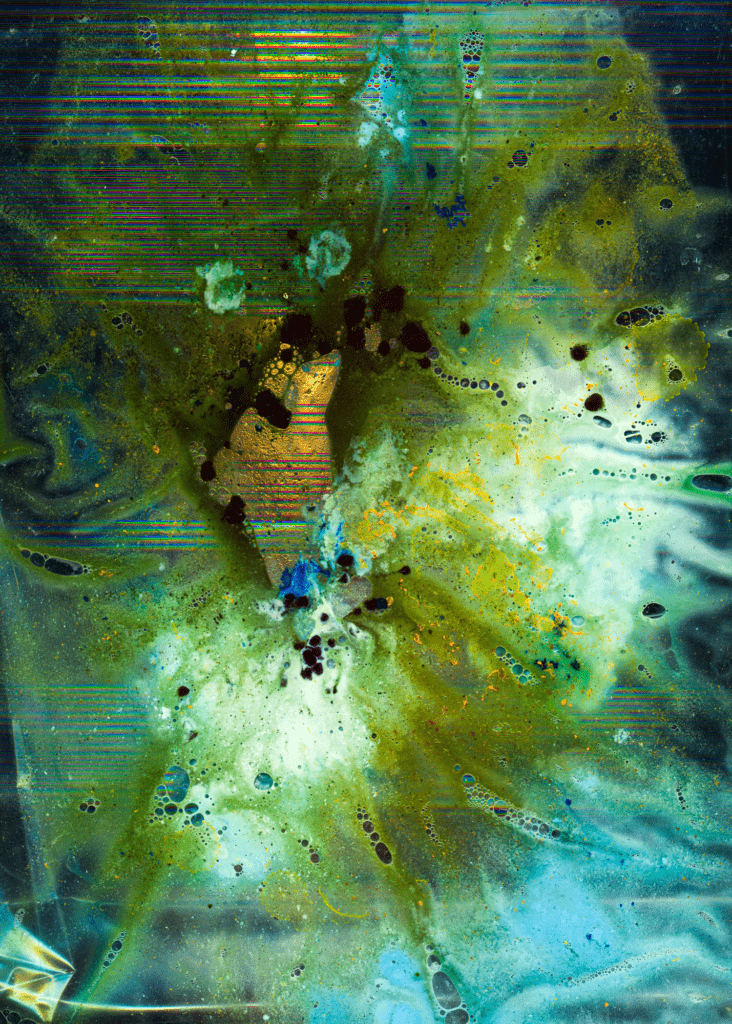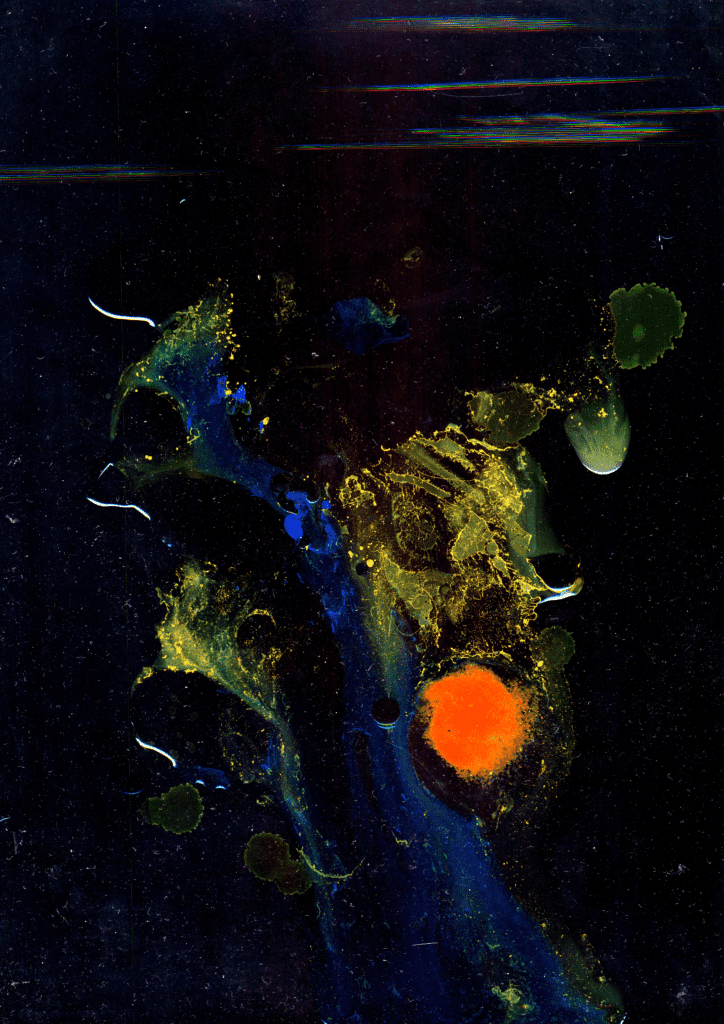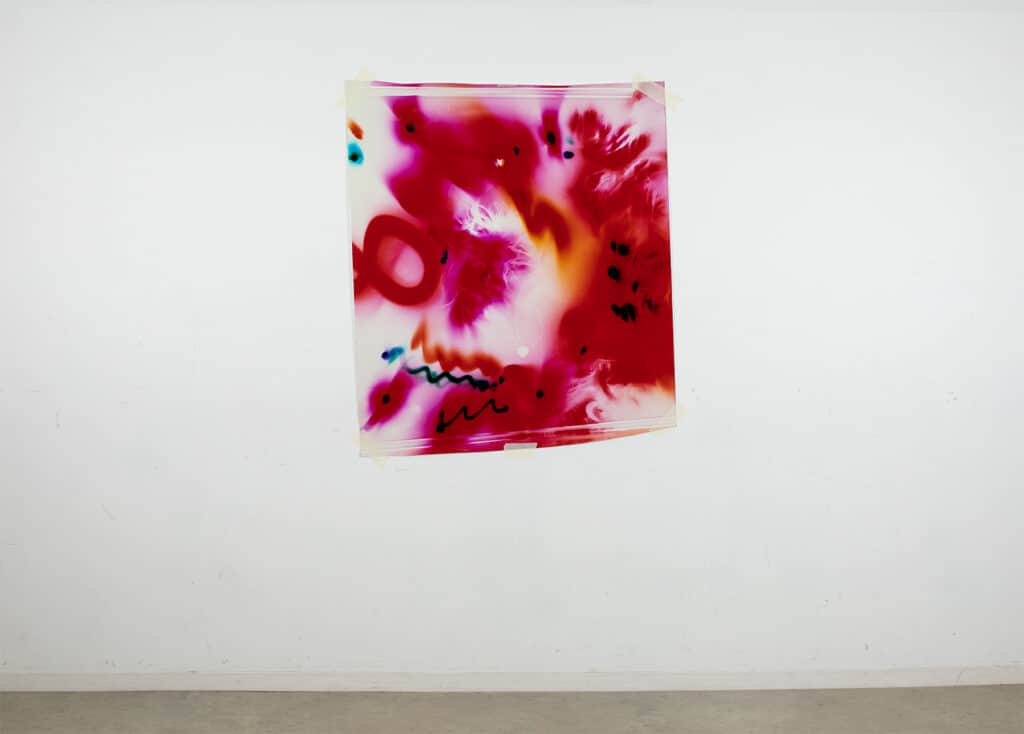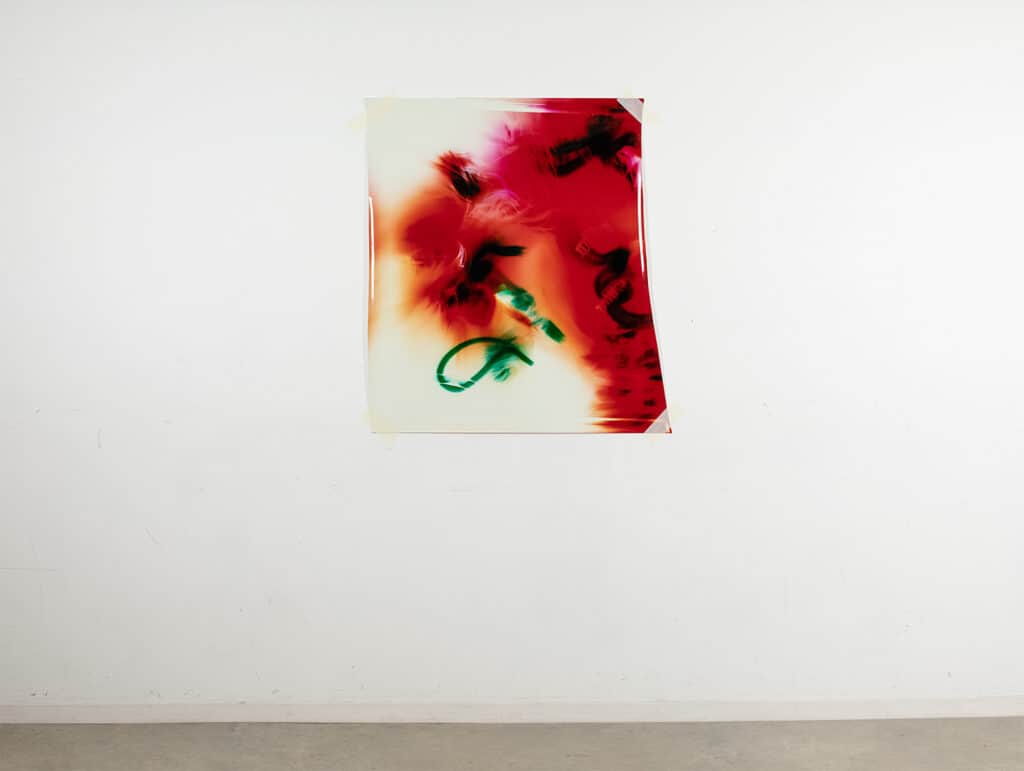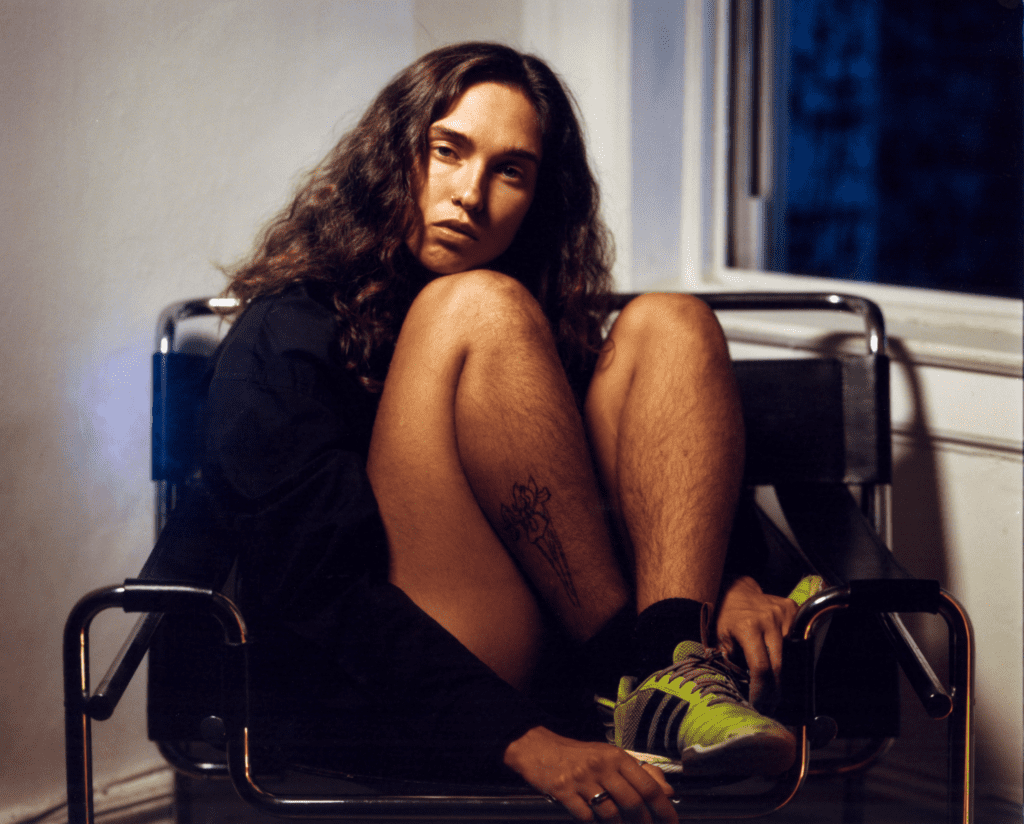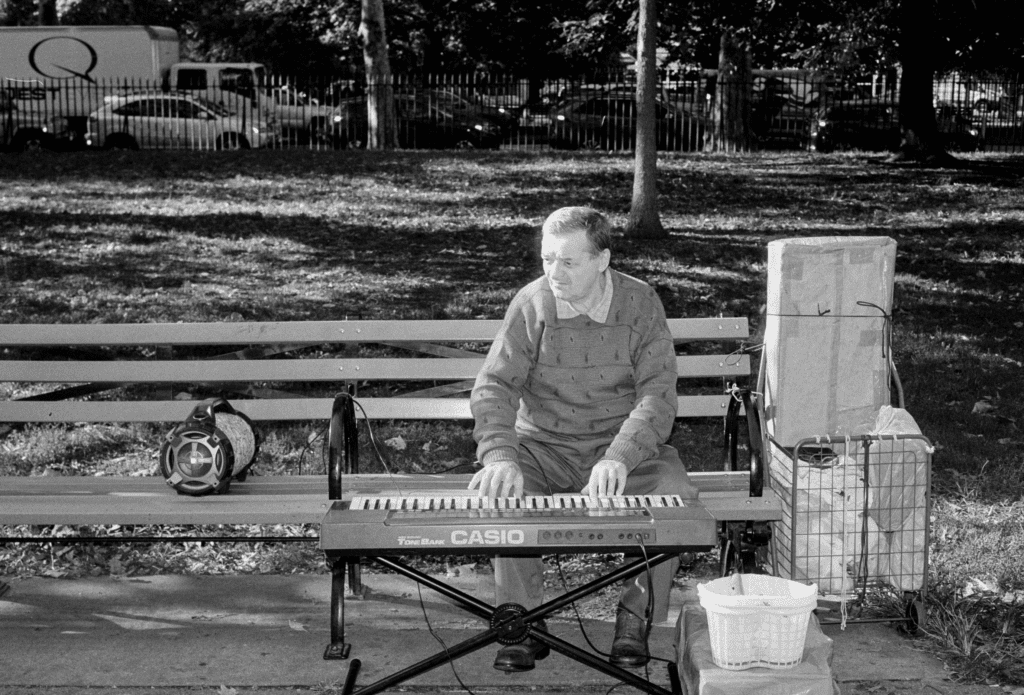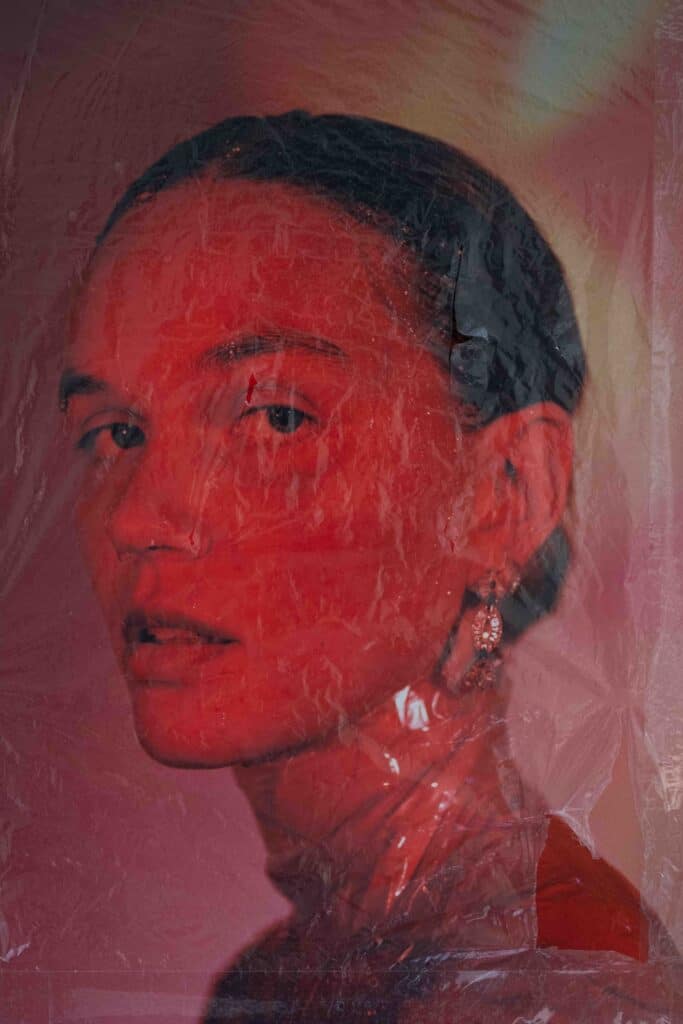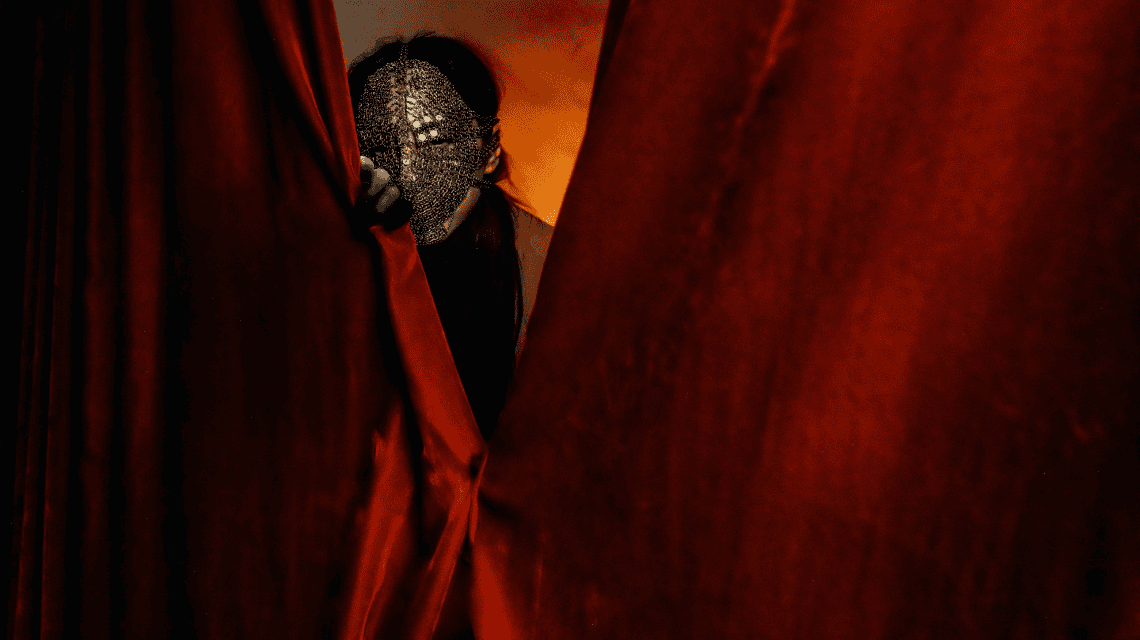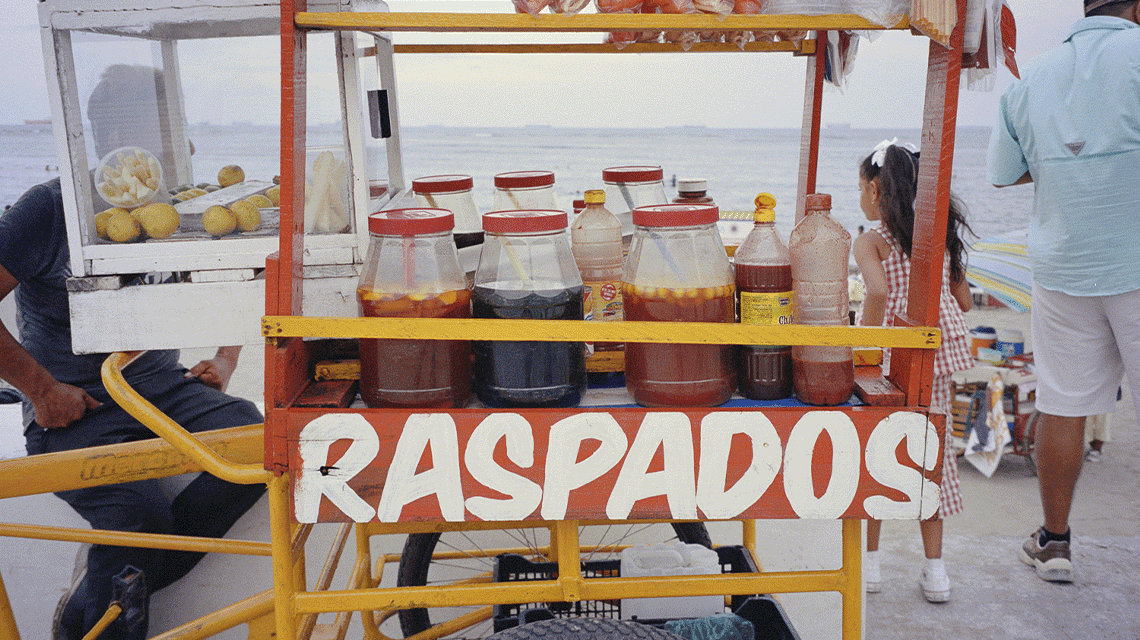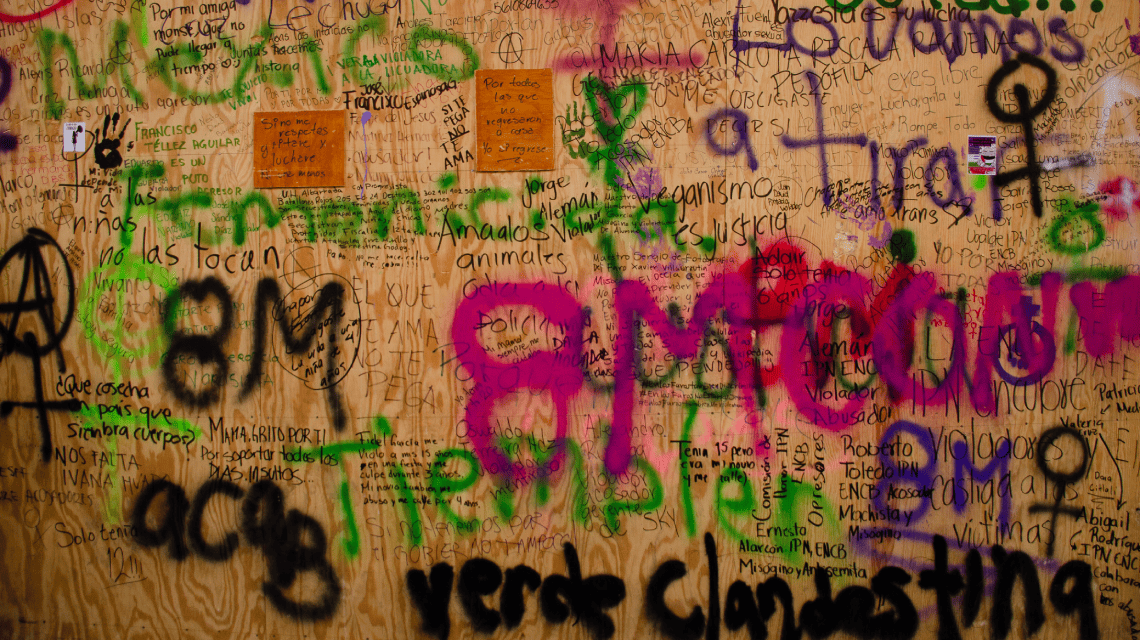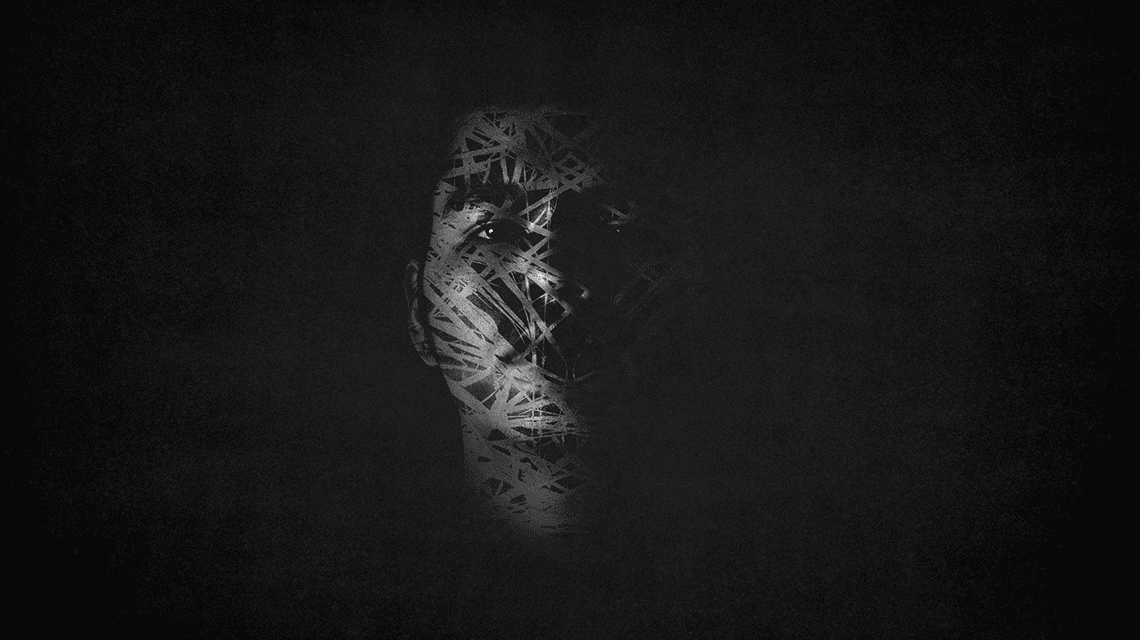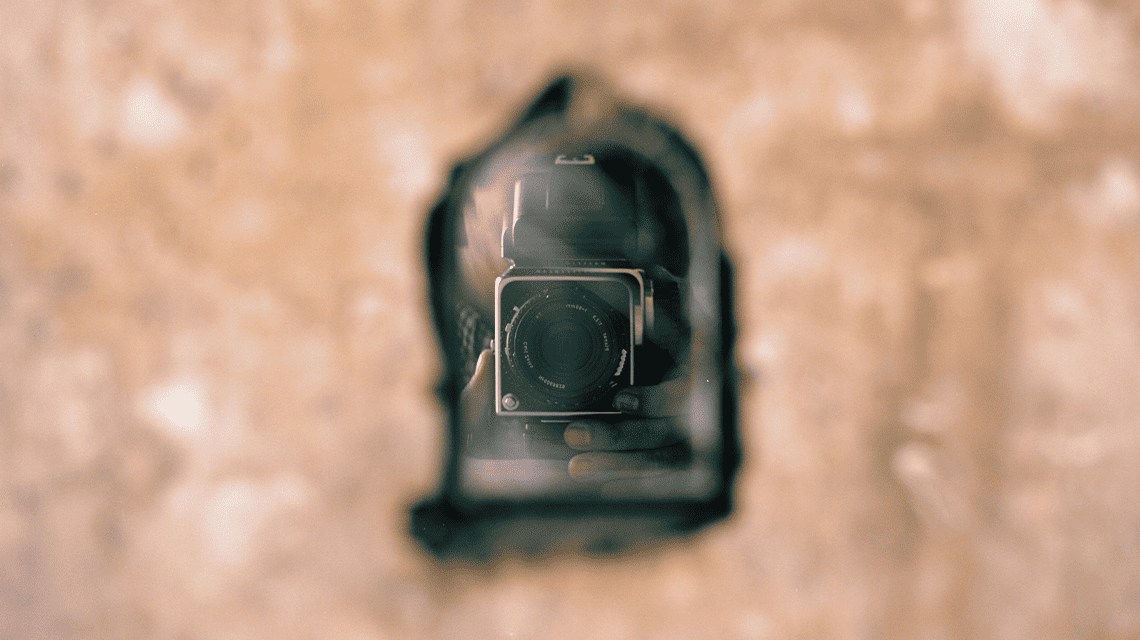Cecilie is not in the habit of romanticizing coincidences, but she can’t find any other way to explain why she arrived in New York days before the opening of the Wolfgang Tillmans retrospective exhibition, To look without fear, on the sixth floor of MoMA, on 12th of September, 2022.
Sitting across from me in a West Village café (which appears larger thanks to its mirrored walls), wearing a turquoise biker blouse and a red mobile phone in her right hand that someone will later steal from her in a Brooklyn bar, she tells me that this Tillmans thing felt like a sign and a welcome, the kind that New York is so unusual for.
After admiring his photographs for years, meeting the challenging museography head-on, and walking through the different facets of Tillmans’ work (from abstract to diaristic), in her eyes it was a confirmation that her personal search for her photographic work was beginning in the right place.
Cecilie Mengel was born in Hørsholm, Denmark, in 1994, and remembers herself as a child powerfully drawn to vivid colors, basketball, and what took her years to understand as a genuine predilection for the performative arts. She talks a lot about her grandmothers: her paternal grandmother gave her watercolors and organized exhibitions for her and her sister in the basement of their house; her maternal grandmother, Mormor, in Danish, (mother’s mother), who to this day sends her packages from home filled with handwritten postcards, childhood sweets and magazines, sparked her natural interest in small things: the simple things are the most liberating, she tells me, holding a cup of coffee without milk or sugar in her hands.
We met at 14th Street and Sixth Avenue. The plan was to walk and talk, maybe go into a Chelsea gallery, but this snowless winter got in the way with -10 degrees Celsius, (to that freezing sensation New Yorkers call brick), so we sought refuge in the first café we found, one with belle époque pretensions whose speakers played only triads of Nina Simone, Karen Dalton, and Janis Joplin songs, in such order.
I always had a hard time fitting in, she tells me, especially in business school. I was the weird one. But when she talks about her non-belonging, there is no adult resentment in her voice, but the same self-assurance of a child who paints watercolors and plays at taking fashion photos with her sister and wears colorful clothes out of an involuntary need to feel different: Cecilie has learned to embrace the uncertainty of creativity, she has made out of her not-fitting a permanent quest for her style.
Besides, she says, everyone who doesn’t fit in always comes to New York.
***
It’s Thursday night. December. There is nothing that indicates that winter is near. This autumn, and the winter that will follow, will be marked by a severe lack of identity: sometimes it will seem like spring, sometimes, without exaggeration, the days will be like the coldest night of summer.
An Allen Street gallery on the Lower East Side has selected pieces by several emerging artists for a show, including four of the nine prints that make up Cecilie Mengel’s Fluid Diaries. The invitation to the opening included the acronym BYOB (Bring your own booze), so most of those present are holding bottles of rosé wine, red plastic cups, and very discreet flasks. At the back of the gallery, with a Heineken can wrapped in a brown paper bag, Cecilie talks to a video camera about her four pieces.
And there is something that makes her work stand out from all the others in the gallery (some of them created with artificial intelligence), and that is that it forces you to get closer, to wonder what you are looking at. In fact, an assistant gets so lost in the emptiness of the color of one of them, that suddenly forgets the conventions and reaches out her hand to touch the work and find out what it’s made of.
I’m about to say something, but I see Cecilie enjoying the scene and smiling.
***
It’s inevitable to talk about the pandemic. By the time Cecilie talks about her Fluid Diaries, we’ve swapped coffee for beer. She then recalls the lockdown and talks about surrendering to an idea, that of photosensitive paper altered by fluids, by unknown liquids lost in the homogeneity of isolation: shampoo, spirulina, alcohol, and other crystallisations, all making a universe latent to photographic reaction and chemical whims.
In seclusion, through these diaries, Cecilie confirmed that it was impossible for her to devote herself to just one thing.
The place empties out.
An off-duty waitress sits at the table next to us and starts eating. Cecilie places a small, red digital camera on the table. You can see her going everywhere with it: she stops in a corner or crouches down to frame a detail on the floor. But every movement of her body is, shall we say, anti-photographic: no pose, no peculiar bending, no tension in the knees. Just a flash, discreet to its possibilities, that flickers and makes you notice that Cecilie is there and that she has just found an interesting composition in which color and shadows come together, just for the sake of the act.
When I ask her why she uses that camera found in a pile in a bazaar for her daily practice, she tells me that this small object makes her be there: photography is about being present, and you have to approach things with blindness.
We leave the café. Cecilie phones to book a darkroom for next week. In a little while they will steal the red mobile phone she holds to her ear. She doesn’t tell me she will, but I’m sure that in the three hours, her darkroom color session will last, she will let the photosensitive paper react to light and filters, resulting in flats of color and flashes, abstract essays, photographs that are not photographs.
At least not at first glance. We will have to get closer to them to find out what these constellations are made of.
Get close, very close, to the point of touching them. EP
